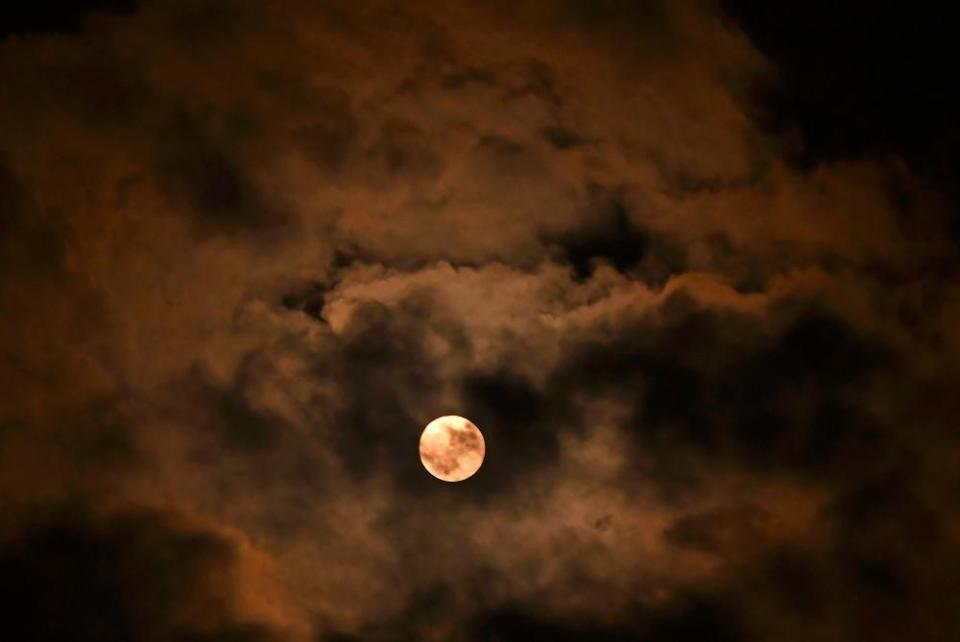Once in a blue moon: rare phenomenon expected in Saturday night sky

On Saturday night, Democrats yearning for a blue wave on election day might choose to look to the skies for an omen: a blue moon.
Blue moons, typically defined as the second full moon in one month, are rare, arriving every two to three years. According to Earthsky.org, the last was on 31 March 2018.
Confusingly, an older definition of blue moon refers to the third of four full moons in a season which, because seasons usually last three months, is one more full moon than expected. The next such seasonal blue moon will come on 22 August next year.
More confusingly still, full moons in October are generally known as “hunter’s moons”. But though this month’s first full moon was on 1 October, it was a “harvest moon”. According to Astronomy.com, that is a “name reserved for the full moon that occurs closest to the autumnal equinox”, which means harvest moons are usually seen in September.
Those hoping for dramatic Halloween spookiness may well be disappointed on Saturday, as the term “blue moon” does not refer to color. The Washington Post noted that cynics downplay blue moons as “visually unremarkable, pedestrian” and pretty much like every other full moon.
That said, there have been times when the moon has turned blue – coinciding with volcanic eruptions. In 1883, the eruption of Krakatoa shot so many “volcanic aerosol” materials into the sky that it scattered “certain wavelengths of light, leaving the moon tinged an unusual aquamarine at the edge”, the Post reported. Blue moons have occurred amid other volcanic eruptions, such as Mexico’s El Chichon in 1983.
On Saturday, Earthsky.org offered a consolation to any disappointed moon gazers, pointing out that Mars will shine “bright red” near the blue moon.

 Yahoo Finance
Yahoo Finance 